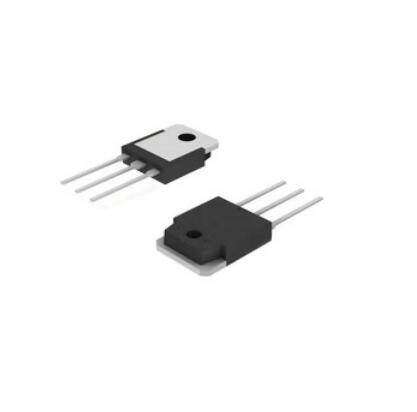Unlock the Future: Discover the Power of High Current IGBT Technology and Its Game-Changing Applications!
In the rapidly evolving landscape of modern electronics, the demand for efficient and powerful components has never been greater. One such component that stands at the forefront of this technological revolution is the high current Insulated Gate Bipolar Transistor (IGBT). This semiconductor device combines the advantages of MOSFETs and bipolar transistors, making it a game-changer for various applications. Whether you're involved in renewable energy systems, electric vehicles, or industrial automation, understanding high current IGBT technology is crucial. This article aims to delve into the intricacies of high current IGBTs, their specifications, and the transformative applications they facilitate in today's world.

Understanding High Current IGBT Technology
High current IGBTs are advanced semiconductor devices designed to handle significant power levels, often exceeding hundreds of amperes. They function by utilizing a gate terminal that controls the flow of current between the collector and emitter, allowing for efficient switching with minimal energy loss. What sets high current IGBTs apart from other semiconductor devices, such as traditional bipolar junction transistors (BJTs) and MOSFETs, is their ability to manage both high voltage and high current simultaneously. Unlike BJTs, which require continuous input current, IGBTs are voltage-controlled, significantly reducing the power needed for operation. This feature enhances their efficiency, especially in demanding applications. A friend of mine, who works in the renewable energy sector, often shares how the integration of high current IGBTs in their systems has led to substantial energy savings and improved performance, showcasing their critical role in modern technology.
Key Specifications of High Current IGBTs
When evaluating high current IGBTs, several key specifications come into play. Voltage ratings are essential, as they determine the maximum voltage the device can handle before breakdown occurs. Typically, high current IGBTs are rated from a few hundred volts to over a thousand volts, making them suitable for a variety of applications. Current ratings are equally important, defining the maximum continuous current that can pass through the device without overheating. Switching speeds, which can reach several kilohertz, influence the efficiency of the device in dynamic applications. Additionally, thermal characteristics, such as thermal resistance and junction temperature, are critical for ensuring reliable operation in high-power environments. These specifications must be meticulously considered when selecting the right IGBT for specific applications, as they directly impact performance and longevity.
Applications of High Current IGBT Technology
The versatility of high current IGBT technology allows for its application across numerous industries, each benefiting from its efficiency and power handling capabilities. One of the most prominent areas is in renewable energy systems, where high current IGBTs are employed in solar inverters to convert DC electricity generated by solar panels into AC electricity for grid use. In wind turbine systems, they facilitate the conversion of variable-speed energy generation into stable power output, enhancing reliability.
Renewable Energy Systems
High current IGBTs are essential in solar inverters, enabling efficient energy conversion by managing high power levels generated during peak sunlight hours. Their ability to switch quickly and handle substantial currents ensures that the maximum amount of energy is harnessed and fed into the grid, making them pivotal in the transition to sustainable energy sources.
Electric Vehicles
In the realm of electric vehicles (EVs), high current IGBTs play a critical role in powertrains and charging systems. They are responsible for controlling the flow of electricity from the battery to the electric motor, allowing for rapid acceleration and efficiency. My cousin, who recently purchased an electric vehicle, was amazed by how seamlessly the vehicle's powertrain operates, attributing much of its performance to advanced IGBT technology that manages power delivery efficiently.
Industrial Automation
High current IGBTs are also widely used in industrial automation, particularly in motor drives that control the speed and torque of electric motors. Their ability to provide precise control over power delivery enhances the efficiency of various manufacturing processes. As industries strive for automation, the importance of reliable and efficient power electronics becomes increasingly apparent.
Power Electronics
In high-power applications and energy conversion systems, high current IGBTs are indispensable. They enable efficient energy management, reducing losses in systems such as power supplies and converters. The significance of these devices in applications demanding high reliability and performance cannot be overstated, as they are integral to the functioning of modern power electronics.
Transformative Impact of High Current IGBT Technology
In conclusion, high current IGBT technology is transforming the landscape of modern electronics, with its impressive specifications and versatile applications. From renewable energy systems to electric vehicles and industrial automation, the impact of high current IGBTs is profound and far-reaching. As industries continue to evolve and demand more efficient power solutions, the significance of high current IGBT technology will only grow. Exploring its potential not only opens doors to innovative applications but also contributes to a sustainable future. Embracing this technology could very well unlock the next wave of advancements in various sectors, making it an exciting area for further exploration.














